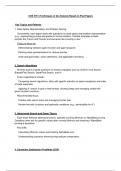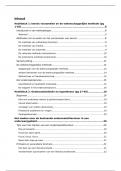Summary
Summary Mastering COS3751: The Ultimate Exam-Focused Study Guide for UNISA's Techniques of Artificial Intelligence
- Institution
- University Of South Africa
For the price of a cup of coffee, these notes will help you cut through the complexity of COS3751 and focus on exactly what you need to ace the exam. With concise explanations, step-by-step problem-solving, and insights from past papers, you’ll save time, reduce stress, and go into the exam with ...
[Show more]




